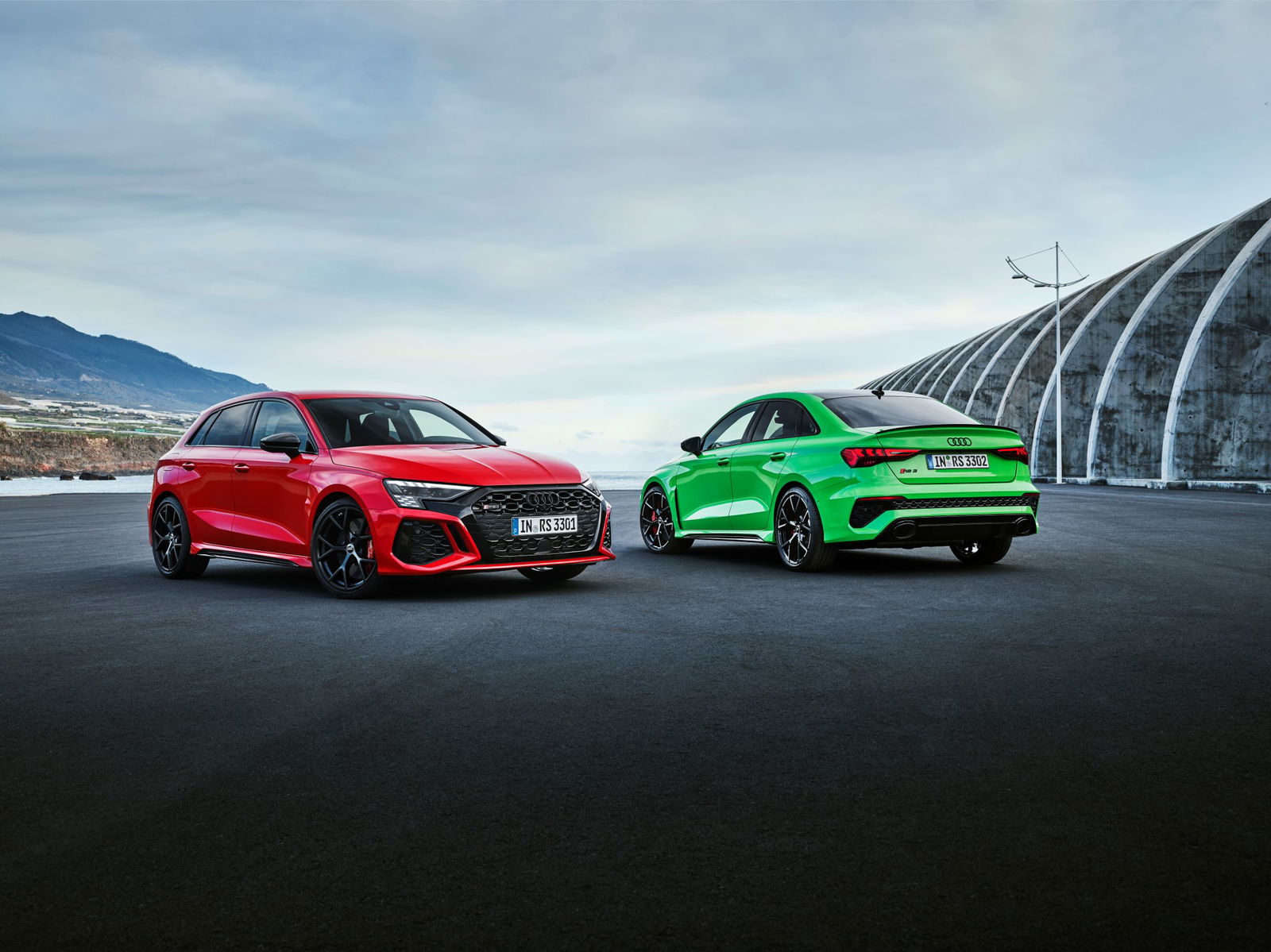
Audi has taken the wraps off its most aggressive hot hatch to date – the 2021 RS3.
As previously revealed, the new 298kW five-cylinder Sportback and sedan boasts an all-new ‘torque splitter’ that the four-ring brand hopes will help it do donuts around its competition. Audi has now unveiled the new RS3 in full, showing off a more purposeful model than ever before.
The new design features a huge black front grille with large air-intakes on the side for the brakes. There’s also a vent behind the front wheels and a larger rear diffuser that indicate the serious intent of the new RS3 models.

Under the bonnet the brand’s iconic 2.5-litre five-cylinder turbo petrol engine remains, now tuned for even more performance than before and from lower in the rev range for more response. The maximum 298kW of power kicks in at 5600rpm and is available to 7000rpm, while the 500Nm of torque is available in a steady stream from 2250-5600rpm.
Audi claims this is enough for the RS3 to launch 0-100km/h in just 3.8 seconds (which is enough to just pip the Mercedes-AMG A45 and its 3.9 second run) and a standard top speed of 250km/h. However, Audi is offering not one, but two top speed upgrades. You can pay for an optional upgrade that takes it to 280km/h or if you opt for the RS Dynamic package with ceramic brakes your RS3 will be capable of 290km/h.
The new model should sound better too, with a new fully adaptive active exhaust. Unlike the out-going model that was either open or closed, this new exhaust can open its valve to any angle to create different levels of noise.

The engine is mated to a seven-speed dual-clutch transmission and sends down to all-four wheels via the front differential and the rear torque splitter. The torque splitter is the key to both better handling and Audi’s new ‘drift mode’ – a first for the RS3. It replaces the old model’s Haldex rear diff with a pair of multi-disc clutches on each rear driveshaft, Audi claims this makes “active, full variable torque vectoring between the rear wheels possible” by allowing more drive to be sent to the outside rear wheel when cornering, which in turn helps reduce understeer.
Audi Sport GmbH managing director, Sebastian Grams, is confident this new model will elevate the RS3 into a genuine track car, whilst retaining its everyday practicality and luxury.
“With the third generation of the Audi RS3 Sportback and the second generation of the Audi RS3 Sedan, we now offer premium sports cars that are suitable for everyday use and equally thrilling to drive on public roads and racetracks,” Grams said. “They represent the entry point into our RS world and, thanks to the torque splitter, the ultimate in outstanding performance in the compact segment.”

To this end the new RS sports suspension package features new passive dampers developed specifically for the RS3 as well as an adaptive damper set-up. Audi Sport have also got more aggressive with the suspension set-up, introducing more camber with stiffer bearings and subframes.
To underline how track-capable Audi Sport has made the RS3, Pirelli P Zero Trofeo R tyres are now available as an option if you intend on making regular visits to your local circuit.
Braking is handled by standard 375mm steel rotors clamped by six-piston calipers, but Audi is keen to push its new ceramic brake package. These 380mm front rotors are both larger and lighter than the steel brakes, reducing unsprung mass by 10kg.
The new RS3 Sportback and Sedan are expected to arrive in Australian Audi showrooms early in 2022, full pricing and specifications won’t be revealed until closer to that date.













Discussion about this post